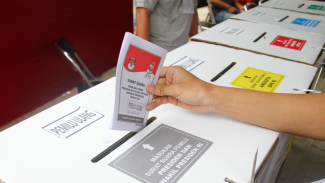Everything about Panic Attack: How to Overcome It
- dw
Jakarta – Panic attack often happen in some people and it can be frightening because this anxiety attack causes the physical sensations to fear. These symptoms includes shortness of breath, dizziness, trembling, losing control, sweating, dry mouth, and many others.
Panic attack happens unexpectedly and is often not related to any external threat. This can last from a few minutes to half an hour. However the physical and emotional effects of the attack may last for a few hours.
For many people, the feelings of panic occur only occasionally during periods of stress or illness. A person who experiences recurring panic attacks is said to have panic disorder, which is a type of anxiety disorder.
There are some strategies you can use to help overcome them. It's important to note that these strategies can be effective for some individuals, but not all, as panic attacks can vary in intensity and triggers.
1. Deep Breathing
Ilustrasi Yoga
- Pixabay.com
Practice deep and slow breathing techniques to help calm your body's physiological response to panic. Try inhaling slowly for a count of four, holding for a count of four, and exhaling for a count of four. Repeat this until you feel more relaxed.
2. Progressive Muscle Relaxation
Tense and release each muscle group in your body, starting from your toes and working your way up to your head. This can help relieve physical tension associated with panic.
3. Mindfulness and Meditation
Learn mindfulness and meditation techniques to stay grounded in the present moment. This can reduce anxiety and prevent your mind from racing.
4. Cognitive Behavioral Therapy (CBT)
CBT is an evidence-based therapy that can help you identify and challenge the negative thought patterns and beliefs that contribute to panic attacks. Consider working with a therapist trained in CBT.
5. Positive Self-Talk
Ilustrasi bahagia dan menjaga kesehatan.
- ist
Replace negative and catastrophic thoughts with more rational and positive ones. Remind yourself that panic attacks are not life-threatening and that you have the skills to manage them.
6. Avoid Stimulants
Reduce or eliminate the intake of caffeine, nicotine, and alcohol, as these substances can exacerbate anxiety and panic.
7. Regular Exercise
Engage in regular physical activity to reduce overall stress and anxiety levels. Exercise releases endorphins, which are natural mood lifters.
8. Healthy Lifestyle
Maintain a balanced diet, get adequate sleep, and manage stress through relaxation techniques like yoga or tai chi.
9. Medication
In some cases, a doctor may prescribe anti-anxiety or antidepressant medications to help manage panic attacks. Consult with a healthcare professional to discuss the potential benefits and risks of medication.
10. Exposure Therapy
Gradual exposure to situations or triggers that provoke panic attacks can help desensitize you to them. This should be done under the guidance of a mental health professional.































